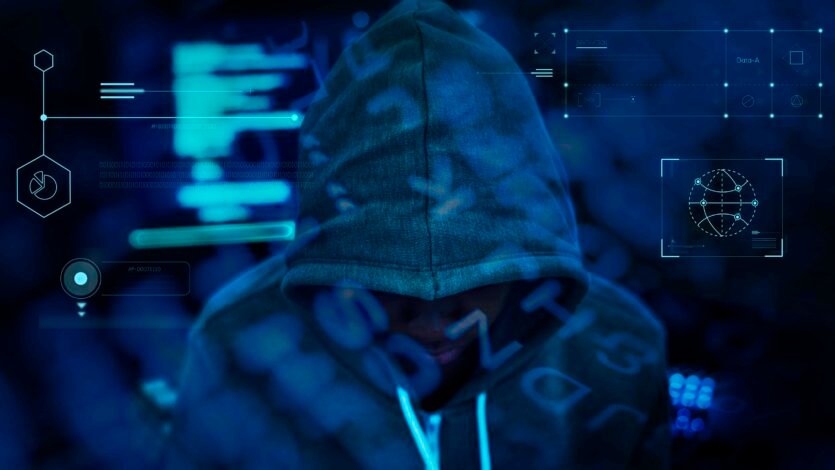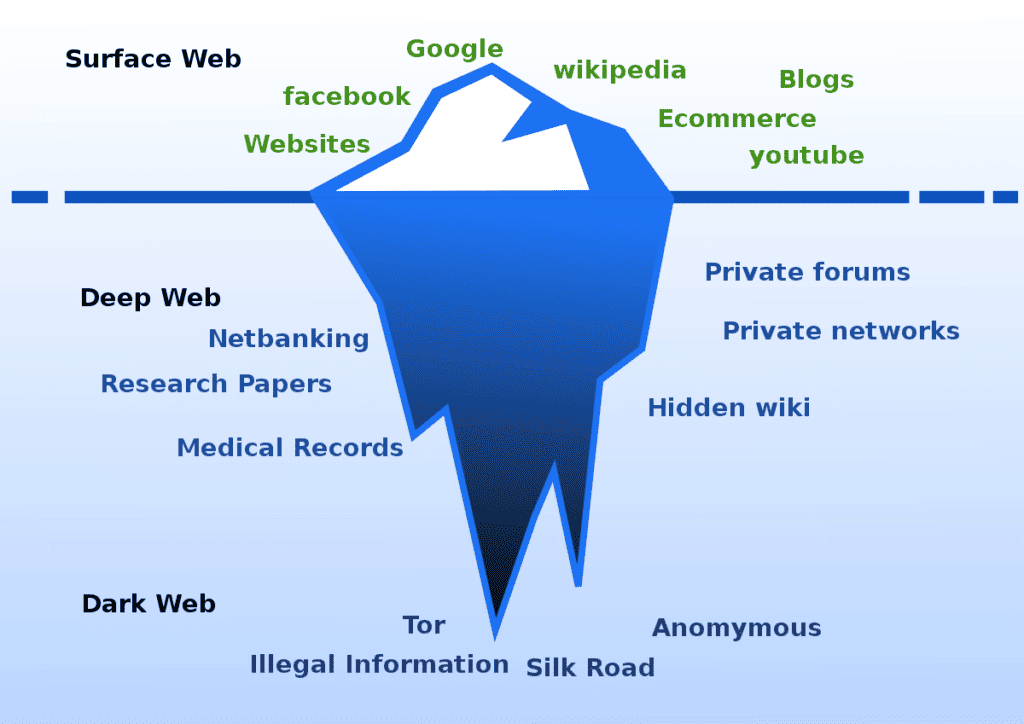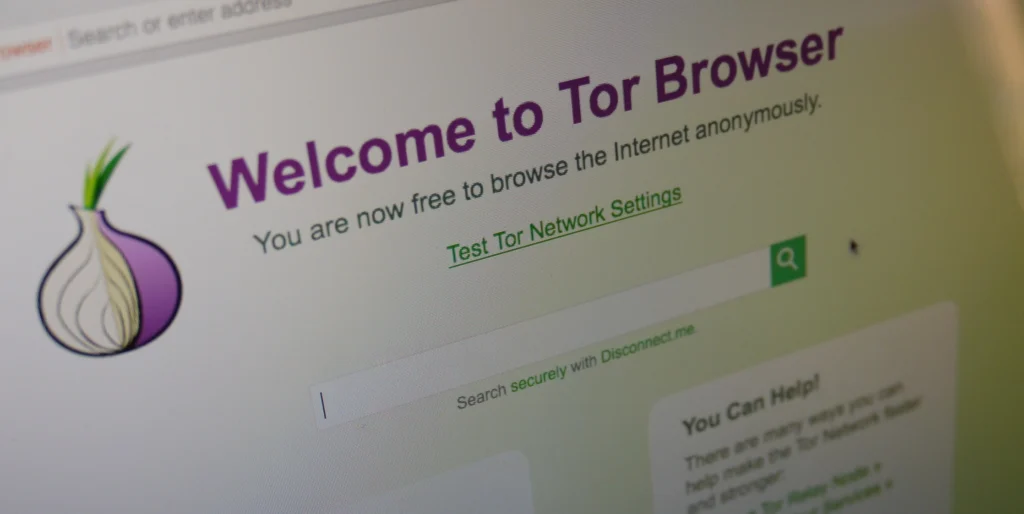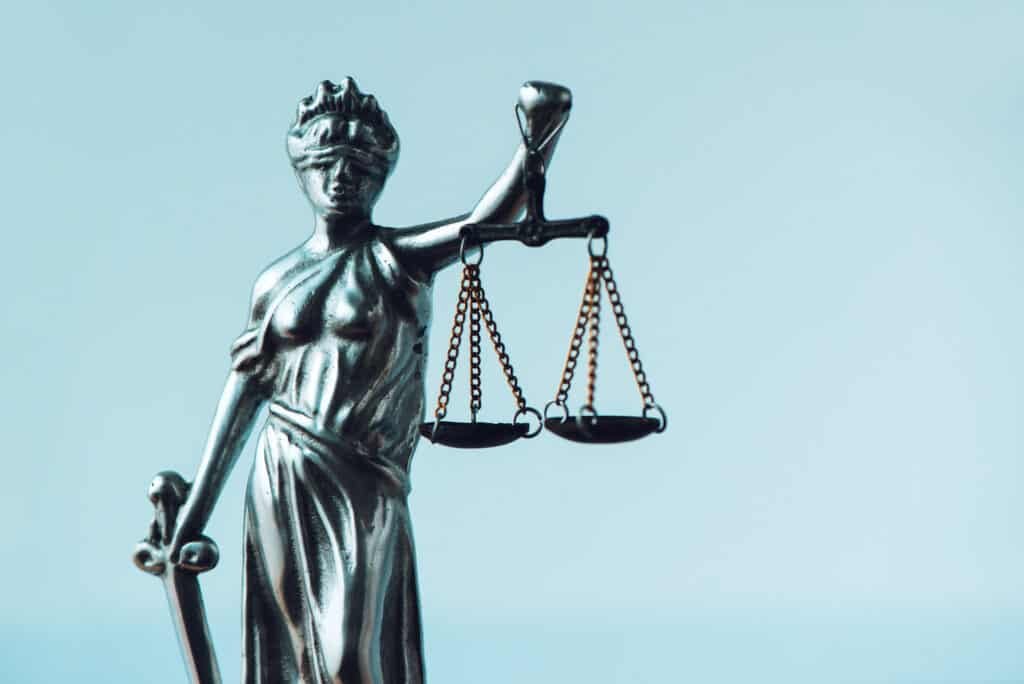What is the Dark Web?

We may earn a small fee from the companies mentioned in this post.
Exploring Its Risks & Rewards
You’ve probably heard whispers of the dark web, a mysterious, hidden realm of the Internet accessible only through specialised tools and browsers.
Some may have portrayed it as a dangerous underworld, while others may have highlighted its potential for anonymity and privacy. But what is the dark web exactly? And is it really as ominous or beneficial as it’s made out to be?
In this blog post, we’ll delve into the depths of the dark web, exploring its risks, rewards, and the impact it has on our society.
Get ready to embark on a journey through the hidden layers of the internet, where we’ll uncover the truth behind what is the dark web, its various uses, and the precautions you should take when venturing into this enigmatic realm. Fasten your seatbelts and let’s dive in!
Short Summary
The dark web is a hidden part of the internet with specialized tools and browsers, offering both legal & illegal activities.
Accessing it requires taking security measures like using a VPN for privacy & protection from cyber threats.
It has advantages such as access to hard-to-find content, but users should be aware of potential risks associated with it.
Understanding the Dark Web: Definition and Purpose

The dark web is like an iceberg lurking beneath the surface of the internet, with only a small fraction visible to the average user. This hidden part of the internet is accessible only through specialized browsers and tools, making it a haven for both legal and illegal activities.
It serves as a platform for communication, commerce, and data storage, but its anonymity also attracts criminal activity and other malicious intent.
So, what makes up the dark web and how does it differ from the rest of the internet? To understand the dark web, it’s essential to grasp the different layers of the internet. The internet can be divided into three primary layers: the surface web, the deep web, and the dark web.
Each layer serves different purposes and has varying levels of accessibility, with the dark web being the most elusive and notorious.
Let’s explore these layers further.
The Surface Web
Think of the surface web as the tip of the iceberg, the part of the internet that is visible to everyone. It comprises less than 5% of the total internet and consists of public-facing websites that can be easily found using popular search engines like Google or Bing.
Examples include news websites, social media platforms, and online shops. Despite being the most accessible part of the internet, the surface web is just the tip of the entire web.
The surface web is only a small fraction of the entire internet, and beneath it lies the deep web and the dark web. As we dive deeper, the content and accessibility become increasingly restricted and hidden, taking us to the next layer – the deep web.
The Deep Web
The deep web is like the massive, submerged portion of the internet iceberg that remains hidden from search engines. It is estimated to make up about 90% of all websites and consists of content that is not indexed by popular search engines.
This includes legal and safer content such as blog posts in the review process, web page redesigns pending approval, and pages accessed when doing online banking.
The deep web also contains private databases, academic journals, and pages locked behind passwords or security walls. It’s crucial to note that not everything on the deep web is illegal or dangerous. In fact, many deep web resources are perfectly legal and serve legitimate purposes.
However, within the vast expanse of the deep web exists an even more hidden and notorious realm – the dark web.
Checkout our blog on preventing viruses on your computer
What is the Dark Web and how does it work?
The dark web is the hidden and infamous part of the deep web, accessible only via specialized web browsers like the Tor Browser. It has gained a reputation for illegal activities and shady dealings, making it the most elusive and notorious layer of the internet.
The dark web is riddled with dark websites that cater to illegal drugs, stolen data, and other criminal activities. While it may seem like a dangerous and lawless place, the dark web also serves legal and legitimate purposes.

Using the dark web, individuals and organizations can communicate securely and anonymously, access censored content, and conduct sensitive research.
This makes the dark web a valuable resource for whistle-blowers, journalists, and even law enforcement agencies. However, the dark web’s association with criminal activity cannot be ignored, as around 57% of dark websites contain illegal content.
As we’ve explored the different layers of the internet, it’s clear that the dark web is a complex and multifaceted realm. Now that we’ve defined the dark web and its purpose, let’s discuss how to access and navigate this hidden world.
Accessing the Dark Web: Tools and Browsers

To access the dark web, you’ll need specialized tools and browsers, as conventional browsers like Google Chrome or Firefox won’t cut it. The most popular and widely used dark web browser is the Tor Browser, which allows users to access the dark web through encrypted servers, providing anonymity for both users and site owners.
The Tor Browser is a product of the Tor Project, an organization dedicated to providing secure and anonymous communication channels for users worldwide.
While the Tor Browser is the go-to choice for accessing the dark web, other dark web browsers also exist, such as I2P, Freenet, and Subgraph OS. Each dark web browser has its own unique features and capabilities, but Tor remains the most reliable and trusted option for accessing the dark web.
Let’s take a closer look at the Tor Browser and other dark web browsers.
Tor Browser
The Tor Browser is a free, open-source web browser that focuses on keeping its users anonymous. It does this by routing your web activity through the Tor network, which consists of encrypted servers operated by volunteers from all around the world.
As your data passes through each server, layers of encryption are peeled off, making it difficult for anyone to track your IP address or location. This process, known as onion routing, provides a high level of anonymity and privacy for both users and website owners.
While the Tor Browser is an excellent tool for accessing the dark web, it’s essential to recognize that it is not entirely foolproof. Users should still exercise caution and take additional security measures, such as using a VPN or installing comprehensive cybersecurity software, to ensure their safety and privacy when accessing the dark web.
Other Dark Web Browsers
Apart from the Tor Browser, other dark web browsers exist, each offering unique features and capabilities. I2P, or the Invisible Internet Project, focuses on anonymous communication, while Freenet provides censorship-resistant publishing.
Firefox and Opera have enhanced privacy settings, and Whonix and Subgraph OS come with secure operating systems.
These alternative browsers offer different levels of anonymity and security, but none of them have gained as much trust and reliability as the Tor Browser. When choosing a dark web browser, it’s essential to consider the level of anonymity, security, and reliability it provides.
While the Tor Browser remains the most popular and trusted option, exploring alternative browsers can offer additional features and capabilities tailored to your specific needs.

Navigating the dark web can be a daunting task, as popular search engines like Google and Bing do not index dark websites. To find content on the dark web, you’ll need to use specialized search engines like Torch, Ahmia, DuckDuckGo, Haystack, and The Hidden Wiki.
However, even the most reliable dark web search engines struggle to keep up, often providing repetitive and irrelevant results. This, combined with the unique naming structure of dark websites, makes finding specific content on the dark web a challenge.
Dark web websites typically use the.onion suffix and scrambled names, making them difficult to remember and recognize. Additionally, many dark websites are set up by scammers and move around to avoid prosecution, further complicating navigation.
To help you find your way in the dark web, let’s explore dark web search engines and the structure of dark web websites.
Dark Web Search Engines

Dark web search engines are specialized tools designed to help users find content on the dark web. Some popular dark web search engines include Torch, Ahmia, DuckDuckGo, Haystack, and The Hidden Wiki.
These search engines attempt to crawl and index dark websites, but their capabilities are often limited due to the ever-changing and elusive nature of the dark web.
When using dark web search engines, it’s essential to be aware of their limitations and exercise caution. Even the most reliable search engines can provide outdated or irrelevant results, and the dark web is filled with scams, malware, and other potential dangers.
Always verify the legitimacy of dark websites before visiting them to minimize potential risks.
Dark Web Website Structure
The naming structure of dark web websites is unique, using the.onion suffix and scrambled names, making them difficult to recognize and remember.
This complexity adds to the challenges of navigating the dark web, as users must rely on search engines or link directories to find specific content. Furthermore, many dark websites are set up by scammers and move around frequently to avoid prosecution, adding another layer of complexity to dark web navigation.
When venturing into the dark web, it’s crucial to be aware of the potential risks and challenges associated with navigating its hidden realms. Always exercise caution, verify the legitimacy of websites, and protect your identity and data when exploring the dark web.
The Legality of the Dark Web

Accessing the dark web is not inherently illegal. Its legality depends on the user’s engagement with it, which can be either for good or harmful purposes.
While the dark web is often associated with illegal activities, such as drug trafficking, arms dealing, and identity theft, it also serves as a platform for legitimate uses, including secure communication, whistleblowing, and access to censored information.
It’s essential to understand that engaging in illegal activities on the dark web is still illegal, regardless of the anonymity and privacy it provides. Users must exercise caution and abide by the law when venturing into the dark web, as the consequences of illegal actions can be severe.
Legal Uses of the Dark Web
The dark web is not solely a hub for illegal activities, but in many people minds the dark web refers to an illicit and illegal part of the Internet (or the World Wide Web). It should be noted that the deep and dark web also serves as a platform for legitimate purposes, providing a means for secure communication, access to censored content, and research on sensitive topics.
Journalists, whistle-blowers and other individuals reporting on companies or governments can use the dark web to share and access sensitive information safely. By doing so, they are protected from repercussions for their actions.
While the dark or hidden web has an association with illegal activities is undeniable, it’s essential to recognise its potential for legitimate use and privacy protection. There is also a significant number of legitimate web pages and dark web commerce sites.
However, internet users must remain vigilant and exercise caution when accessing the dark web for legal purposes, as the risks and potential dangers cannot be ignored.
Illegal Activities on the Dark Web
The dark web is infamous for its illicit activities and shady dealings. From drug trafficking and arms dealing to human trafficking and identity theft, the dark web is rife with criminal enterprises and malicious actors. It also serves as a platform for cybercrime, such as hacking, fraud, and the distribution of illegal pornography.
Despite the potential benefits of the dark web, the risks and dangers associated with its illegal activities are too great to ignore. Users who engage in illegal activities on the dark web may face severe consequences, including fines, imprisonment, and other legal penalties.
It’s crucial for individuals accessing the dark web to understand the risks and consequences associated with illegal activities and to exercise caution when navigating this hidden realm. The dark web may offer anonymity and privacy, but it is not a lawless playground, and engaging in illicit activities can have serious repercussions.
Staying Safe on the Dark Web: Security Measures and Precautions

Protecting your personal information and data is of utmost importance when accessing the dark web. With the inherent risks and potential dangers lurking within its hidden corners, taking appropriate security measures is crucial for ensuring your safety and privacy.
This includes using a VPN, securing your identity and data with identity theft monitoring, and installing comprehensive antivirus and antimalware software, such as Kaspersky Security Cloud.
By taking the necessary precautions and being vigilant while accessing the dark web, you can minimise the risks associated with this hidden realm and protect yourself from potential cyberattacks, identity exposure, and other dangers.
It’s essential to remain cautious and prioritize your safety and privacy when venturing into the dark web.
Using a VPN
When accessing the dark web, using a Virtual Private Network (VPN) is highly recommended. A VPN provides an additional layer of security by encrypting your internet traffic and routing it through a remote server, effectively hiding your IP address and location.
This added protection helps ensure your anonymity and privacy while accessing the dark web, making it more difficult for cybercriminals or other malicious actors to target you.
By using a VPN alongside the Tor Browser, you can further enhance your online privacy and security when venturing into the dark web. This combination of tools offers a powerful defence against potential cyberattacks, identity theft, and other dangers lurking within the hidden corners of the dark web.
Protecting Your Identity and Data
In addition to using a VPN and the Tor Browser, it’s essential to protect your identity and data when accessing the dark web. This includes using identity theft monitoring services and comprehensive antivirus and antimalware software like Kaspersky Security Cloud.
These tools help safeguard your personal information and devices from potential cyberattacks, data breaches, and other threats associated with the dark web.
By taking these security measures, you can ensure your safety and privacy while exploring the dark web. Remember, it’s crucial to remain vigilant and prioritize your security when navigating this hidden realm, as the risks and potential dangers cannot be ignored.
The Dark Web’s Impact on Society

The dark web has a profound impact on society, with both positive and negative consequences. On one hand, the dark web offers privacy protection, encrypted email services, anonymity operating system tutorials, advanced privacy tips, hard-to-find books, and political news.
It is used by legitimate web companies, monitored by law enforcement agencies, and even mainstream media organizations.
On the other hand, the dark web serves as a means of communication for those in hostile environments and offers illegal substances, cyber threats, viruses, and hitmen for hire, putting users at risk of cyberattacks and identity exposure.
As we’ve seen, the dark web is a complex and multifaceted realm that poses both risks and rewards. Its impact on society is significant, and understanding the intricacies of the dark web can help us better navigate and address the challenges and opportunities it presents.
Advantages of the Dark Web
The dark web offers several advantages, including privacy protection, encrypted email services, anonymity operating system instructions, advanced privacy tips, and access to hard-to-find books and political news.
These benefits appeal to a wide range of individuals and organizations, from journalists and whistle-blowers to political dissidents and privacy advocates. The dark web also provides a platform for legitimate web companies to operate and is monitored by law enforcement agencies and mainstream media organisations.
While the dark web’s positive aspects are undeniable, it’s crucial to recognize the potential risks and dangers associated with its use. Users must remain vigilant and exercise caution when accessing the dark web for legitimate purposes, as the risks and potential dangers cannot be ignored.
Dangers and Risks Associated with the Dark Web
While the dark web offers numerous advantages, it also comes with its fair share of dangers and risks. The dark web is notorious for illegal activities, such as drug trafficking, arms dealing, identity theft, and cybercrime.
It also serves as a platform for the distribution of illegal pornography and other illicit content. These illegal activities pose significant risks not only to the individuals involved, but also to society as a whole.
In addition to illegal activities, the dark web is also rife with cyber threats, viruses, and other potential dangers. Users who venture into the dark web without taking adequate security measures are at risk of cyberattacks, identity exposure, and other threats.
The dark web’s anonymity and privacy features may offer some protection, but they are not fool proof, and users must remain cautious when exploring this hidden realm.
In conclusion, the dark web is a complex and multifaceted realm that poses both risks and rewards. Its impact on society is significant, and understanding the intricacies of the dark web can help us better navigate and address the challenges and opportunities it presents.
By recognising the potential dangers and taking the necessary precautions, we can harness the positive aspects of the dark web while mitigating its risks.
Summary
Throughout this blog post, we’ve delved into the depths of the dark web, uncovering its risks, rewards, and the impact it has on our society.
We’ve explored the different layers of the internet, the tools and browsers used to access the dark web, and the various legal and illegal activities that take place within its hidden corners.
As we’ve seen, the dark web is a double-edged sword. On one hand, it offers privacy protection, anonymity, and access to otherwise unavailable information. On the other hand, it harbours criminal activity, cyber threats, and other potential dangers.
By understanding the complexities of the dark web and taking the necessary precautions, we can continue to explore this enigmatic realm while staying safe and protecting our privacy. The dark web may be a hidden and mysterious part of the internet, but with knowledge and vigilance, we can navigate its depths and uncover its secrets.
Frequently Asked Questions
Is it illegal to look at the dark web, is the dark web illegal?
It is not illegal to view the Dark Web using the Tor network, but it is illegal to carry out activities such as accessing child abuse images, promoting terrorism, or selling illegal items such as weapons.
Therefore, it’s important to be aware of the laws and regulations in your area when navigating the Dark Web, or before you access dark web sites.
What is the dark web actually used for?
The Dark Web is mainly used for anonymous activities, such as whistle-blowing or the sharing of confidential information. It is also often used by criminals for malicious activities such as identity theft, trafficking in stolen credit cards and other illicit activities.
The Dark Web is a dangerous, yet necessary place used for accessing data anonymously, such as for whistle-blowing or political organizing. It can also be used by criminals for malicious activities like selling weapons, drugs, and stolen data, making it a risky but necessary aspect of today’s digital landscape.
What does dark web look like?
The Dark Web is a hidden, underground internet that can only be accessed using special software. It’s quite similar to the regular web, except you won’t find it on search engines like Google or Bing. Instead, you need to use encrypted networks such as Tor to visit sites in the dark web.
Although not all websites on the Dark Web are illegal, it does contain some pretty dangerous content.
What is found on the dark web?
The dark web is an online underground world of illegal activities, including the selling and buying of drugs, weapons, stolen identities, hacked passwords, illegal pornography, and more. It provides anonymity to those who want it and is thus used for malicious purposes.
What are Dark Web marketplaces?
Dark Web marketplaces are essentially online marketplaces that operate on the Darknet, which is part of the internet that is intentionally hidden and can only be accessed using specific software, configurations, or authorisation. The Darknet is often used for maintaining privacy and anonymity, but it is also known for its illegal activities.
Is it illegal to go on the dark web?
No, it is not illegal to go on the dark web. While there are some areas which contain illegal activities or content, there are also legitimate websites and services hosted on the dark web that require user anonymity.
However, users should be aware of what risks they may be taking while using the dark web.
External Resources
- “Tor and the Deep Web: An Introduction” by the Tor Project: https://2019.www.torproject.org
- “Not Everything Is Dark and Scary On the Darknet” by the Norton Security Team: https://us.norton.com/blogs
With over three decades of experience in the heart of London’s financial sector, I have dedicated my career to the pursuit of robust cybersecurity practices and IT leadership. As a Certified Information Systems Security Professional (CISSP), Certified Information Security Manager (CISM), Certified Chief Information Security Officer (C|CISO), Certified Ethical Hacker (CEH), and Computer Hacking Forensic Investigator (CHFI), I bring a wealth of knowledge and expertise to the table.
My journey in the field of cybersecurity has not only been about personal growth but also about sharing my insights with others. As an international speaker, I have had the privilege of addressing audiences worldwide, discussing the importance of cybersecurity in today’s digital age. My passion for knowledge sharing extends to my work as an author and blogger, where I delve into the complexities of cybersecurity, offering practical advice and thought leadership.
In my role as a CISO and Head of IT, I have overseen the development and implementation of comprehensive information security and IT strategies. My focus has always been on creating resilient systems capable of withstanding the evolving landscape of cyber threats.
My Master’s degree in Cybersecurity has provided a solid academic foundation, which, when combined with my practical experience, allows me to approach cybersecurity from a holistic perspective.
I am always open to connecting with other professionals in the field, sharing knowledge, and exploring new opportunities. Let’s secure the digital world together.

